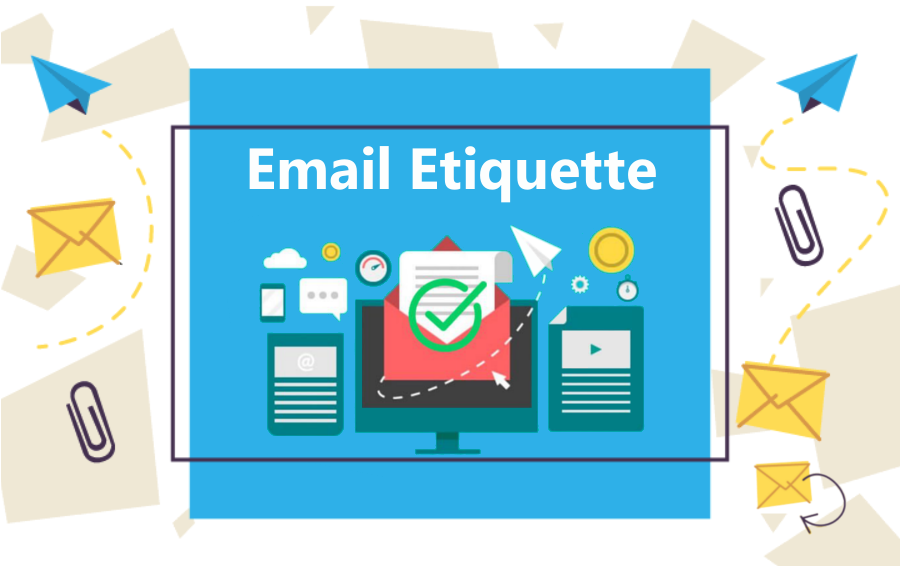
In this age of the Internet where many communication channels are landing their feet into the business market successfully and ranking at the top of business, there is an assumption that email communication has become obsolete in the field of business. But there are many reasons why business email is still one of the most used ways to attract & engage with your target customers.
Advantages of Business Communication email
- Keeps record of conversation which is searchable and can be referred to later.
- Allows to send messages to thousands of people with a single click.
- Quickly gets send within minutes.
- Saves great deal of money by saving the expense of sending letters.
- Allows to share files of any type as attachments.
- Maintains address book for every email that is sent/received.
Etiquette Rules for Perfect Email
The email etiquette that will help companies to make great impressions on those who do business with them are as follows:
1. Write clearly and precisely
Keep your email short and sweet by focusing on the point of your purpose to write the email. Use clear and appropriate words that would sound both professional and polite(friendly).
2. Include a sharp & catchy subject line
Always start with a subject line that would highlight the importance of your mail. Most of the people open emails based on the subject line. The email subject must bring the whole email content to a single line.
3. Be professional in all aspects
Use a professional email Id to avoid being mistaken as Spam.
Use professional salutations like “Hi” or “Hello”. Address your email recipient with their first name. If you are sending it to a group of people, you can address it as “Hello everyone” or “Hi all”.At the end of the email, write phrases like “Thanks” or “Regards” with your name and company name so that the customer can follow up by addressing you the next time.
4. Use Proper Grammar
Make sure you are sounding grammatically good in your email. Avoid using short abbreviations that are not appropriate. Check the spelling, punctuation, and grammar before you click the “Send” button.
5. Recheck your email recipients list
Do not click ” Reply all” unless everyone in the “To” address needs to know the message you are ought to send. Recheck your email recipients list always and send emails only to the right people associated with the content.
6. Send only relevant content
Get to know the previous email conversation of your customers, gather the required data, understand their need and send the relevant response to them. Nowadays, many email management software which helps you to track the entire email conversation as a Ticket is available.
One such software is Output Desk – Ticket Management and Live chat software
7. Offer your further assistance
Make your customers feel that you are there to help them by sending an offer of further assistance. The recipient may or may not require additional help, but it is the duty of the support agent or sender to provide the best customer service by such actions.
8. Schedule a call for complex discussions
If customers request a call, or if the issue or query appears to be complex, or if you need to convey urgent information to customers, you can extend your assistance by scheduling a call with your client. This would be much appreciated in critical or emergency situations.